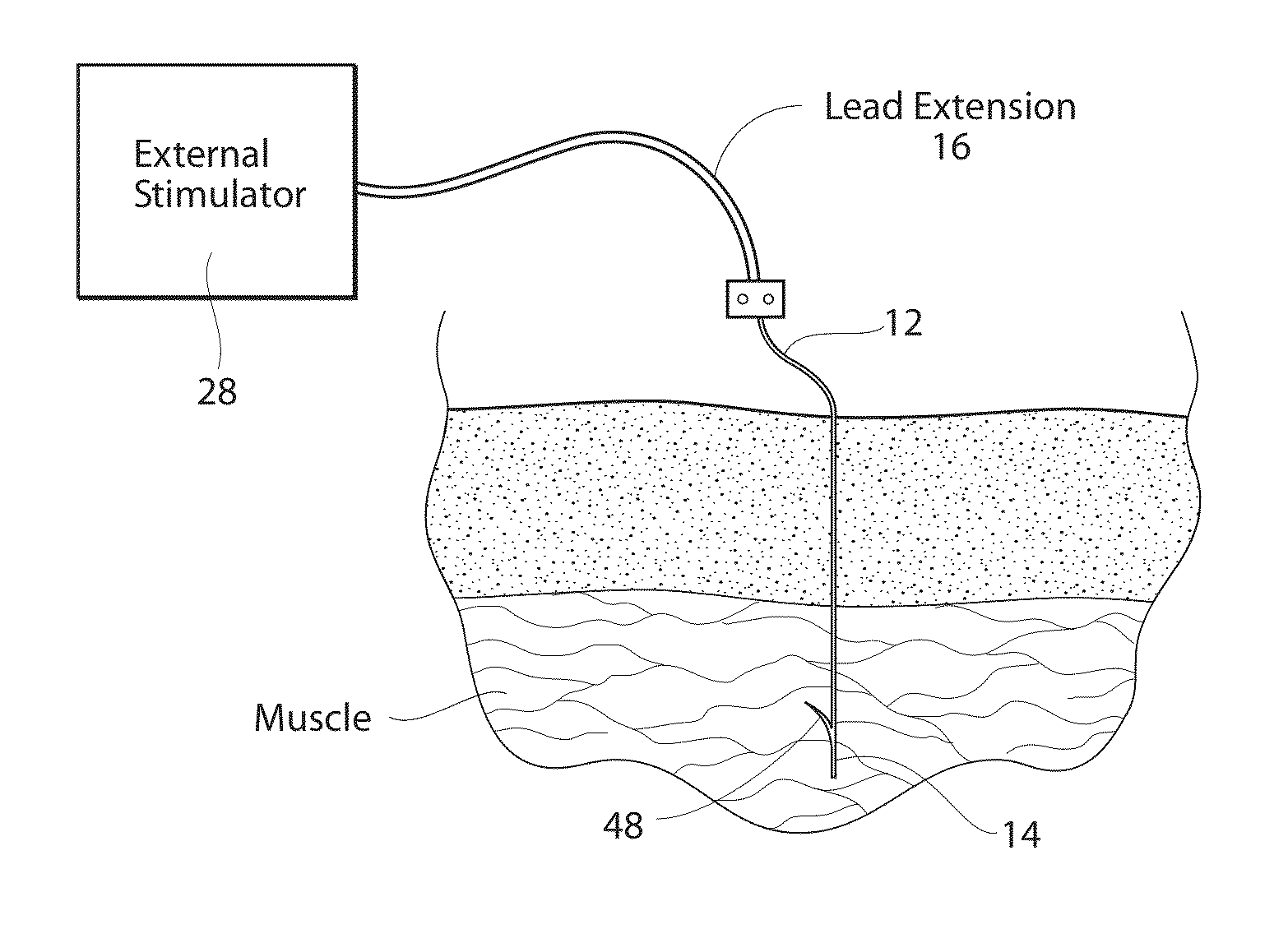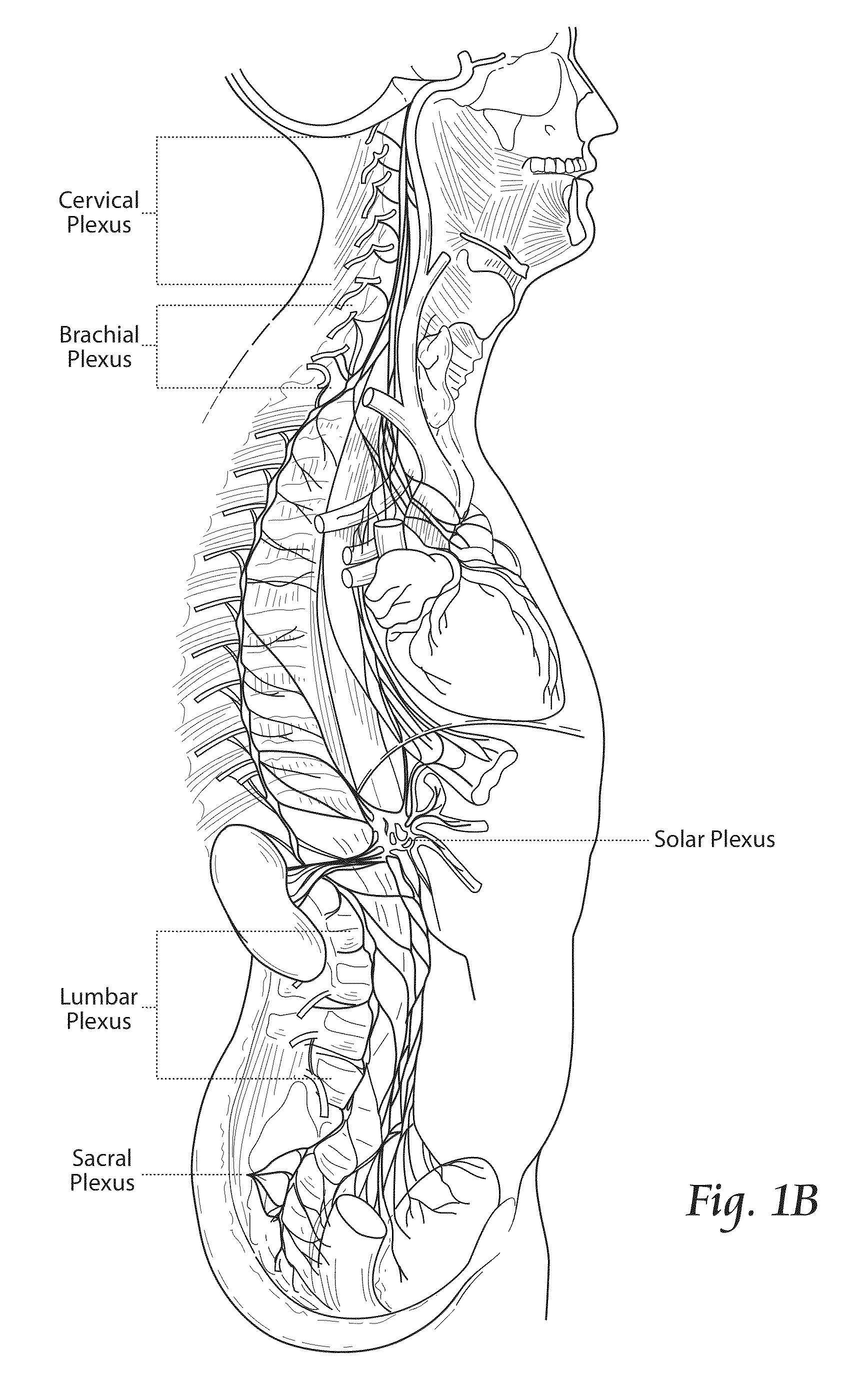While existing systems and methods can provide remarkable benefits to individuals requiring therapeutic relief, many issues and the need for improvements still remain.
Many techniques, such as non-
narcotic analgesics described below, have been developed to treat pain, but all of them are ultimately insufficient.
Psychological strategies, such as
biofeedback and psychotherapy, may be used as an adjunct to other therapies but are seldom sufficient, and there are few studies demonstrating
efficacy.
Electrical stimulation systems have been used for the relief of pain, but widespread use of available systems is limited.
The pain can be extremely bothersome to amputees, significantly decrease their
quality of life, correlate with
increased risk of depression, and negatively affect their inter-personal relationships and their ability to
return to work.
The present methods of treatment, which are primarily medications, are unsatisfactory in reducing
amputation-related pain, have unwanted side effects, offer a low success rate, and often lead to
addiction.
Stump and phantom pain can be severe and debilitating to a large proportion of persons with amputations, who will unfortunately often progress through a battery of management techniques and procedures without finding relief from their pain.
Severe post-amputation pain often leads to further disability, reduced
quality of life, and frequently interferes with the simple activities of daily life more than the amputation itself, and no available therapy is sufficient to manage it.
Many techniques have been developed to treat post-amputation pain, but all of them are ultimately insufficient.
However, they are general, non-targeted attempts that are rarely sufficient in managing
moderate to severe chronic post-amputation pain.
The use of
narcotic analgesics, such as N-methyl-D-aspartate (NDMA) antagonists, has shown only minor success with inconsistent results.
Several trials of multiple
narcotic agents have failed to show statistically significant improvement in phantom pain.
Other physical treatments, including
acupuncture,
massage, and percussion or heating / cooling of the stump, have few complications but also have limited data to support their use and have not been well accepted clinically.
Psychological strategies, such as
biofeedback and psychotherapy, may be used as an adjunct to other therapies but are seldom sufficient, and there are few studies demonstrating
efficacy and these approaches are not specific to stump or phantom pain.
Mirror-box therapy has demonstrated mixed results and is not widely used in clinical practice.
Many
surgical procedures have been attempted, but few are successful and most are contraindicated for the majority of the amputee patients.
Furthermore, neuroablative procedures carry the risk of producing deafferentation pain, and any surgical procedure has a greater chance of failure than success.
Thus, present medical treatments of stump and phantom pain are inadequate, and most sufferers resort to living with pain that is poorly controlled with medications.
Electrical stimulation systems hold promise for relief of post-amputation pain, but widespread use of available systems is limited.
TENS has a low rate of serious complications, but it also has a relatively low (i.e., less than 25%) long-term rate of success.
Application of TENS has been used to treat pain successfully, but it has low long-term
patient compliance, because it may cause additional discomfort by generating cutaneous pain signals due to the electrical stimulation being applied through the
skin, and the overall
system is bulky, cumbersome, and not suited for long-term use.
In addition, several clinical and technical issues associated with surface electrical stimulation have prevented it from becoming a widely accepted treatment method.
First, stimulation of cutaneous pain receptors cannot be avoided resulting in stimulation-induced pain that limits
patient tolerance and compliance.
Second, electrical stimulation is delivered at a relatively
high frequency to prevent stimulation-induced pain, which leads to
early onset of
muscle fatigue in turn preventing patients from properly using their arm.
Third, it is difficult to stimulate deep nerves and / or muscles with surface electrodes without stimulating overlying, more superficial nerves and / or muscles resulting in unwanted stimulation.
The required daily maintenance and adjustment of a surface electrical stimulation
system is a major burden on both patient and caregiver.
Similar to TENS, when SCS evokes paresthesias that cover the region of pain, it confirms that the location of the
electrode and the stimulus intensity should be sufficient to provide
pain relief and
pain relief can be excellent initially, but maintaining sufficient paresthesia coverage is often a problem as the lead migrates along the
spinal canal.
When it can produce paresthesias in the region of pain,
spinal cord stimulation is typically successful initially in reducing pain, but over time the paresthesia coverage and
pain reduction is often lost as the lead migrates away from its target.
All amputations produce neuromas and not all neuromas are painful, but neuromas are thought to be a major source of pain after amputation.
As previously described, electrical stimulation has been used and shown to be effective in treating amputee pain, but present methods of implementation have practical limitations that prevent widespread use.
External systems are too cumbersome, and implanted
spinal cord stimulation systems often have problems of lead migration along the
spinal canal, resulting in either the need for frequent
reprogramming or clinical failure.
 Login to View More
Login to View More  Login to View More
Login to View More 


